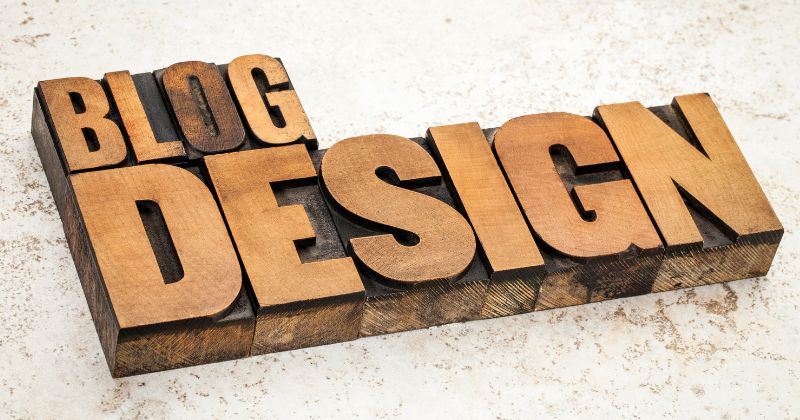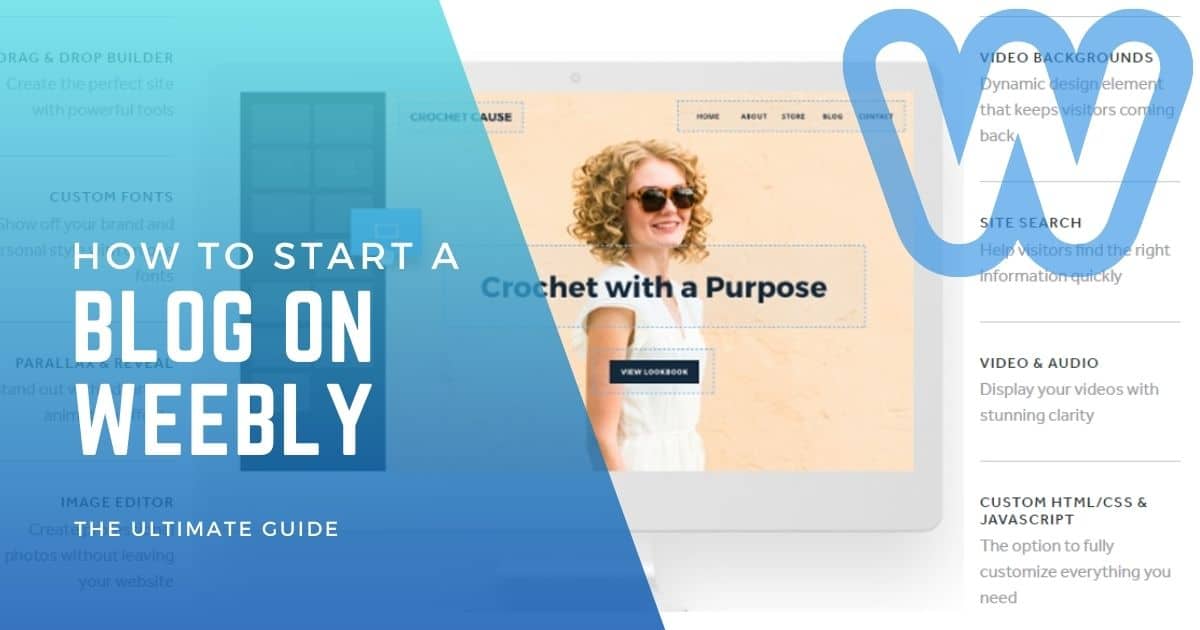Starting a blog? Weebly makes it simple. It’s a user-friendly blog platform built for anyone, regardless of tech skills, to help you easily design and manage a blog. You drag, you drop, and you’re done.
But it’s not all easy. You’ll encounter challenges like picking a domain name or figuring out SEO. I’ve been through this myself. As a successful digital marketer and blogger, I know how to solve these issues. Stay with me; I’ve got practical advice for you.
Why learn how to start a blog on Weebly? Because a blog is more than just words on a screen. It can be a source of income or a way to share your expertise. Whether you’re a marketer, entrepreneur, or new to blogging, mastering Weebly can help you reach your goals. Let’s get you set up for success.
Setting up Your Weebly Blog Page
So, you’ve decided to start a blog on Weebly? Great choice! Weebly’s homepage is a user-friendly platform that allows you to create and customize your own website without any coding knowledge. With Weebly’s post options, you can easily publish your blog posts and customize the slug for each post.
Create an Account on Weebly
To create an account on Weebly, start by visiting the Weebly homepage. From there, locate the “Sign Up” button in the main navigation. You have the option to sign up using your email address or connect with your Google or Facebook account for a quicker registration process. This is a great way to get started with Weebly and access all of its features.
Once you have signed up, you will be directed to your Weebly account dashboard. This is where all the magic happens! You can customize your blog sidebar, navigate through the main navigation, and create your first blog post with just a click of a button.
Choose a Theme That Aligns With Your Blog’s Niche and Aesthetic
Now that you have set up your Weebly account, it’s time to choose a theme for your blog page. Click on the “Themes” tab in your dashboard and browse through the available options to find a theme that suits your style and preferences. This step is crucial as the theme you select will determine how your blog page appears to people who read your content. Take the time to explore different themes and find one that resonates with your personal brand and the type of content you plan to code on your blog.
When selecting a theme for your Weebly blogging site, consider your blog’s niche and aesthetic. Are you running a fashion blog on Weebly? Look for Weebly themes that showcase beautiful imagery and have customizable options for displaying outfits. If it’s a tech blog on Weebly, prioritize Weebly themes that offer clean designs with easy navigation.
Remember, when designing your Weebly homepage, your chosen theme sets the tone for your entire website, including the blog sidebar. So, take some time to explore different options before making a final decision for your Weebly blogging experience. Whether it’s your first blog post or not, the right theme can make all the difference.
Customize Your Blog Page
After choosing a theme that suits your style, it’s time to customize your weebly homepage further. Click on the “Design” tab in your weebly website dashboard and explore various customization options available.
Start by adding a logo to your Weebly homepage that represents your brand or blog identity. A well-designed logo can leave a lasting impression on visitors and make them remember your Weebly website easily.
Next, on your Weebly homepage, upload a header image that complements your blog’s niche. This image will appear at the top of every page on your website, so choose something eye-catching and relevant to your content.
Don’t forget to add a navigation menu to your Weebly homepage, making it easy for visitors to explore different sections of your Weebly website. You can create dropdown menus and organize your pages in a logical order.
Set Up Essential Pages
Now that you have customized the overall look of your blog page, it’s time to set up some essential pages. These pages provide crucial information about you, how to contact you, and ensure compliance with privacy regulations.
Start by adding an “About” page where you can introduce yourself and share your story with readers. This is an excellent opportunity to build a connection with your audience and let them know why they should follow your blog.
Next, create a “Contact” page in your blog sidebar where visitors can contact you with any questions or collaboration opportunities. Include a contact form or provide alternative communication methods such as email or social media handles.
Lastly, remember the “Privacy Policy” page in your blog sidebar. This page outlines how you collect, use, and protect user data on your website. It’s essential for building trust with your audience and ensuring compliance with privacy laws.
To add these pages, go to the “Pages” tab in your dashboard and click the “+ Add Page” button. Give each page a suitable name and customize their design according to your preferences.
Congratulations! You’ve created your site’s pages!
Writing and Optimizing Blog Posts on Weebly
Crafting engaging and informative content is the key to starting a successful blog on Weebly. Your goal should be to create posts that resonate with your target audience, keeping them coming back for more. To achieve this, focus on providing valuable information, entertaining stories, or actionable tips that address their needs and interests.
Using relevant keywords in your blog posts is essential for improving search engine visibility. Conduct keyword research to identify the terms people use to search for topics related to your blog. Incorporate these keywords naturally throughout your content to help search engines understand what your post is about. However, avoid overstuffing your articles with keywords, negatively impacting readability and user experience.
Optimizing meta tags, headings, and URLs can significantly improve the SEO performance of your blog posts on Weebly. Meta tags briefly describe your post that appears in search engine results pages. Craft compelling meta titles and descriptions that entice users to click through and read your content.
Headings are important in organizing your blog posts and making them more scannable for readers. Use H1 tags for the title of your post and H2-H6 tags for subheadings within the article. This helps readers navigate through your content and provides context for search engines when indexing your pages.
URL optimization involves creating descriptive slugs (the part of the URL after the domain name) that accurately reflect the topic of each post. For example, if you’re writing an article about “How to Start a Blog on Weebly,” a suitable slug would be “/how-to-start-a-blog-on-weebly.” This makes it easier for users and search engines to understand what they can expect from the page.
Formatting plays a crucial role in enhancing the readability of your blog posts. Use headings, bullet points, and images strategically throughout your content to break up large blocks of text and make it easier for readers to skim. Headings help organize your ideas, bullet points provide concise information, and images add visual interest.
When writing blog posts, consider the overall structure and flow. Start with an attention-grabbing introduction that hooks the reader and clearly states what they can expect from the article. Use subheadings to divide your content into sections, each addressing a specific aspect of the topic.
To engage your audience further, encourage them to interact with your blog by leaving comments. This creates a sense of community and signals to search engines that your content is valuable and worth ranking higher in search results.
Adding Media and Visuals to Enhance Your Weebly Blog

Incorporating media and visuals is essential. By using videos, images, and other interactive elements, you can grab your audience’s attention and make your blog posts more engaging.
Include High-Quality Images that are Relevant to Your Blog Post Topic
Images play a crucial role in attracting readers and conveying your message effectively. To make your Weebly blog visually appealing, include high-quality images that are relevant to your blog post topic. These images should capture the essence of your content and resonate with your audience.
You can use stock photo websites like Unsplash or Pixabay to find stunning visuals for free. However, if you want something more unique or personalized, consider creating custom graphics using tools like Canva or Adobe Spark. These platforms offer many templates and design elements that allow you to create eye-catching visuals without advanced design skills.
Remember that while images are important for enhancing your blog’s aesthetics, they should also serve a purpose. Ensure the images you choose complement your text and provide additional context or information related to the topic. This way, they will capture your readers’ attention and add value to their overall reading experience.
Embed Videos from Platforms Like YouTube or Vimeo to Enrich Your Content
Videos are another powerful tool for enriching your Weebly blog posts. They allow you to convey complex ideas in an engaging and easily digestible format. Whether it’s a tutorial, an interview, or a product review, embedding videos from platforms like YouTube or Vimeo can significantly enhance the quality of your content.
To incorporate videos into your Weebly blog posts, copy the embed code provided by these platforms and paste it into the HTML editor of your Weebly post. This will seamlessly integrate the video into your blog, allowing your audience to watch it without leaving your site.
Videos not only capture the attention of your readers but also provide a dynamic element to your content. They can help you explain concepts more effectively, showcase demonstrations, or share personal experiences. By including videos in your Weebly blog, you can create a multimedia experience that keeps your audience engaged and eager for more.
Utilize Galleries or Sliders to Showcase Multiple Images in an Organized Manner
Sometimes, a single image may not be enough to convey your blog post’s full story or visual impact. In such cases, utilizing galleries or sliders can be a great way to showcase multiple images in an organized manner.
Weebly offers built-in gallery and slideshow elements that allow you to create visually appealing displays of images. With these tools, you can arrange multiple photos in a grid-like format or present them as a slideshow with smooth transitions. This lets you tell a more comprehensive visual narrative and keep your readers engaged throughout their scrolling experience.
When using galleries or sliders, pay attention to the order and arrangement of the images. Consider creating a logical sequence that guides readers through the story you’re trying to tell. You can use captions or brief descriptions for each image to provide additional context and enhance understanding.
Integrating Social Media and Sharing Options on Weebly

You’ve started your blog on Weebly, and now it’s time to take it to the next level by integrating social media and sharing options. By doing so, you can promote your blog posts automatically, encourage readers to share your content easily and increase engagement through social media feeds or widgets.
Connect Social Media Accounts to Promote Your Blog Posts Automatically
One of the key benefits of using Weebly is its seamless integration with various social media platforms like Facebook, Twitter, Instagram, and more. By connecting your social media accounts to your Weebly blog, you can effortlessly promote your blog posts as soon as they go live.
To start, navigate to your Weebly dashboard’s “Settings” tab. Look for the “Social” section, where you’ll find options to connect different social media accounts. Click on the respective platform’s icon and follow the prompts to authorize access.
Once connected, every time you publish a new blog post on Weebly, it will automatically be shared on your linked social media accounts. This feature saves you time and effort while extending the reach of your content to a wider audience.
Add Social Sharing Buttons to Encourage Readers to Share Your Content Easily
Word-of-mouth promotion is powerful in the digital age too! Adding social sharing buttons to your Weebly blog posts makes it convenient for readers to spread the word about your content across their own networks.
Weebly offers built-in options for incorporating these buttons into your blog posts. To do this:
- Open the editor for a specific blog post.
- Locate the sidebar menu on the left-hand side.
- Click on “Elements” under “Build.”
- Scroll down until you find “Share Buttons” and drag it onto your blog post.
You can customize the appearance and placement of the social sharing buttons to align with your blog’s design. Consider placing them at the beginning or end of each post, ensuring they are easily noticeable and accessible.
Display Social Media Feeds or Widgets on Your Blog Page for Increased Engagement
Engaging your readers on social media platforms is a fantastic way to build a community around your blog. Weebly allows you to display social media feeds or widgets directly on your blog page, encouraging visitors to connect with you across different channels.
To incorporate social media feeds or widgets:
- Go to the “Settings” tab in your Weebly dashboard.
- Select “Social” from the options.
- Look for the section labeled “Embed Code.”
- Obtain the embed code for your desired social media feed or widget (e.g., Facebook Page Plugin).
- Paste the code into the provided field.
By displaying real-time updates from your social media accounts, you can pique visitors’ interest and encourage them to follow you for more engaging content beyond your blog posts.
Enable Comments Section Using Disqus or Other Commenting Systems
Fostering discussions and interactions with your readers is crucial for building a loyal audience. Weebly offers various commenting systems, including popular options like Disqus, which allow visitors to leave comments on your blog posts.
Managing and Organizing Your Weebly Blog Content

Categorize blog posts using tags or categories for easy navigation by readers.
One of the key aspects is categorizing your blog posts using tags or categories. This helps create a systematic structure for your content, making it easier for readers to navigate through your blog and find the information they seek.
By assigning relevant tags or categories to each blog post, you create a logical grouping that allows visitors to access specific topics quickly. For example, if you have a travel blog, you can categorize your posts into destinations such as “Europe,” “Asia,” or “North America.” This way, readers interested in exploring Europe can easily find all the related content under the designated category.
Using tags within each category further enhances the browsing experience. Tags act as labels that provide more specific information about the content of a particular post. For instance, if you have written about budget travel tips in Europe, you can add tags like “budget travel” and “Europe” to make it easier for readers to search for those keywords.
Weebly provides an intuitive interface that allows you to create and manage these categories and tags effortlessly. Utilizing this feature effectively, you enhance accessibility and ensure that visitors can easily find relevant information on your blog.
Utilize the search function to help visitors find specific content on your blog.
The search function is another essential tool for managing and organizing your Weebly blog content. This feature lets visitors quickly search for specific keywords or topics within your blog. Implementing a robust search functionality on your website enhances user experience by efficiently accessing desired information.
When users land on your blog with a particular topic in mind but don’t know which category it falls under or where to look for it, having a readily available search bar saves them time and effort. They can enter their query, and the search function will display relevant results from your blog.
To optimize the search experience on your Weebly blog, ensure that you use appropriate keywords in your blog posts. This helps search engines index your content accurately, making it easier for visitors to find what they want. Regularly updating and maintaining your content ensures that the search results remain relevant and up-to-date.
Create an editorial calendar to plan and schedule your blog posts in advance.
To stay organized and maintain a consistent flow of content on your Weebly blog, it is crucial to create an editorial calendar. An editorial calendar allows you to plan and schedule your blog posts in advance, ensuring a steady stream of fresh content for your readers.
Start by outlining the topics or themes you want to cover on your blog. This could be based on seasons, trends, or other criteria aligning with your niche. Once you have identified the main topics, break them down into specific subtopics or ideas that can be developed into individual blog posts.
Next, assign tentative dates or timeframes for each post based on factors such as relevance, seasonality, or upcoming events. This helps you create a balanced publishing schedule and ensures that you have enough time to research and write each post effectively.
By planning ahead with an editorial calendar, you save time and consistently deliver valuable content to your audience.
Customizing the Design and Theme of Your Weebly Blog

One of the key aspects that sets your site apart is its design and theme. With Weebly’s user-friendly website builder, you have the freedom to customize various elements to match your brand identity and create a visually appealing blog.
Customize fonts, colors, and backgrounds to match your brand identity
Your blog’s appearance is crucial in attracting readers and keeping them engaged. Luckily, Weebly provides various options to customize fonts, colors, and backgrounds according to your preferences. You can convey professionalism or creativity by selecting appropriate typography that aligns with your content style.
To get started with customizing these elements:
- Access the “Blog Settings” in your Weebly dashboard.
- Navigate to the “Design” tab.
- Click on “Fonts” to choose from various font options available.
- Experiment with different combinations until you find a font that complements your content.
Similarly, you can select suitable color schemes for headings, text blocks, links, and buttons by following these steps:
- Go back to the “Design” tab under “Blog Settings.”
- Click on “Colors & Fonts.”
- Explore the color palette provided by Weebly or manually input specific hex codes for precise customization.
- Ensure that the chosen colors are visually pleasing while maintaining readability.
Furthermore, if you wish to add more personality to your blog’s design, consider changing the background:
- Head over to the “Design” tab once again.
- Select “Background.”
- Choose from various options, such as solid colors or images.
- If using an image as a background, ensure it doesn’t overpower or distract from your content.
Customizing fonts, colors, and backgrounds allows you to create a cohesive brand identity that resonates with your readers.
Adjust layout options such as column width and sidebar placement
The layout of your blog plays a significant role in the overall user experience. Weebly allows you to adjust various layout options to enhance readability and seamless navigation. Here’s how:
- Within the “Design” tab under “Blog Settings,” locate the “Layout” section.
- Explore options for column width, sidebar placement, and other layout settings.
- Consider the content you will share on your blog when making these adjustments.
- For instance, opting for a wider column width might be beneficial if you frequently showcase images or videos.
Experimenting with different layouts is crucial to finding what works best for your specific niche and target audience. Remember to keep it simple yet visually appealing to ensure optimal engagement.
Add custom CSS code for advanced design modifications if desired
While Weebly provides extensive design features, some bloggers may desire further customization beyond the platform’s built-in options. Weebly allows you to add custom CSS code to achieve advanced design modifications in such cases.
To add custom CSS code:
- Access the “Blog Settings” in your Weebly dashboard.
- Navigate to the “SEO” tab.
- Scroll down until you find the option for adding custom CSS.
Launching Your Successful Blog on Weebly
Congratulations! You are now ready to launch your successful blog on Weebly. By following the steps outlined in this guide, you have gained a solid understanding of how to set up your blog page, write and optimize engaging blog posts, add media and visuals, integrate social media and sharing options, manage and organize your content, and customize the design and theme of your Weebly blog.
Setting up your Weebly blog page is the first crucial step. Ensure you choose a visually appealing template that aligns with your brand or niche. Customize it to make it unique and reflective of your personality or business.
Next, focus on writing high-quality blog posts that are optimized for search engines. Use relevant keywords naturally throughout your content to improve visibility in search results. Pay attention to formatting, headings, and meta descriptions to enhance the readability and SEO-friendliness of your posts.
Incorporating media such as images, videos, and infographics can greatly enhance the visual appeal of your Weebly blog. Visual content captures readers’ attention and helps convey information more effectively.
Don’t forget to leverage social media by integrating sharing options into your Weebly blog. This allows readers to easily share your content across different platforms, increasing its reach and potential engagement.
As you continue blogging on Weebly, staying organized by managing categories or tags for better navigation is essential. This will make it easier for readers to find specific topics they want to explore further.
Lastly, take advantage of Weebly’s customization options to create a visually stunning blog that stands out from the crowd. Experiment with different themes, fonts, colors, and layouts until you achieve a design that represents your unique style or brand identity.
Now that you have learned how to start a successful blog on Weebly, let nothing hold you back! Create valuable content, engage with your audience, and build a thriving online presence.
FAQs
Can I monetize my Weebly blog?
Weebly allows blog monetization through various methods, such as affiliate marketing, sponsored posts, and ad placements. Implementing eCommerce features like a digital storefront is also possible. However, note that some monetization strategies might require a paid Weebly subscription for advanced customization
Can I integrate Google Analytics with my Weebly blog?
Integrating Google Analytics with a Weebly blog is straightforward. Weebly offers a designated section under the “Settings” tab for pasting your Google Analytics tracking code. This feature is available in both free and paid subscriptions, enabling data-driven insights into website traffic and user behavior.
Is it possible to migrate an existing blog to Weebly?
Migrating an existing blog to Weebly is feasible, but the process can vary based on the original platform. Weebly allows for the importation of posts via RSS feed or manual copying and pasting. However, complete design elements and SEO settings may require manual reconfiguration upon transfer.
Can I collaborate with other bloggers on Weebly?
Weebly does not natively support multi-user blogging capabilities for direct collaboration within the platform. However, you can manually coordinate with other bloggers to publish content by sharing login credentials. Alternatively, articles can be prepared externally and then uploaded by the account holder for publication.



